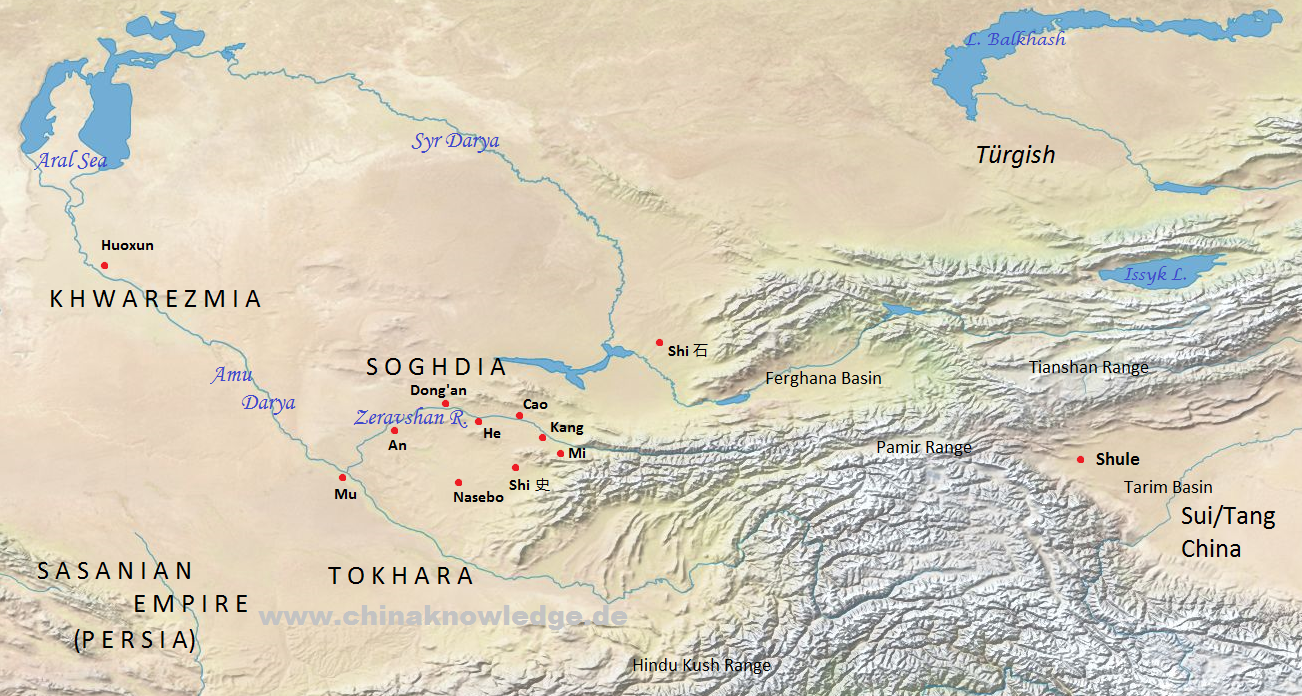The state of Miguo 米國, short for Mimo 彌末 or Mimohe 彌抹賀 (a transliteration of Maymurgh), was located near Panjakent in modern Tajikistan, a land formerly known as Soghdia or Soghdiana, in Chinese Sute 粟特. In ancient times, this region belonged to the country of Kangju 康居 (Kangguo 康國) and became an own state in the late 6th century. Its inhabitants belonged to the Nine Tribes of Zhaowu (zhaowu jiuxing 昭武九姓) who originally came from the city of that name (modern Linze 臨澤, Gansu), migrated to the west and founded the city of Boxide 鉢息德 at the banks of River Nami 那密 (today called Zeravshan, in Chinese Zelafushan 澤拉夫善河, a tributary of the Amu Darya). The region was during the sixth century dominated by the Western Türkish Khanate.
 |
The Soghdia around 600 CE. Based on Tan Qixiang 譚其驤, ed. (1995), Zhongguo lishi ditu ji 中國歷史地圖集, Vol. 5, Sui, Tang, Wudai Shiguo shiqi 隋唐五代十國時期 (Beijing: Zhongguo ditu chubanshe, 1996). |
During the Sui period 隋 (581-618), merchants from Miguo travelled along the Silk Road east, and brought tributes to the imperial court of China. For a short time in the early 650s the city was occupied by Muslim invaders, but became part of the Tang empire 唐 (618-907) in 658. It was transformed into the indirectly administrated prefecture (jimizhou 羈縻州) of Nanmi 南謐, and the ruler of Miguo was formally appointed regional inspector (cishi 刺史). During the 8th century the country of Miguo still sent tributes to the Tang court, like jade articles, lions, and dancers. In 730 the chieftain Moyemen 末野門 visited the Tang capital Chang'an 長安 (today's Xi'an 西安, Shaanxi). Emperor Xuanzong 唐玄宗 (r. 712-755) gave the ruler of Miguo the title of King Gongshun 恭順王. in the eighth century, Miguo was again occupied by Muslim invaders.